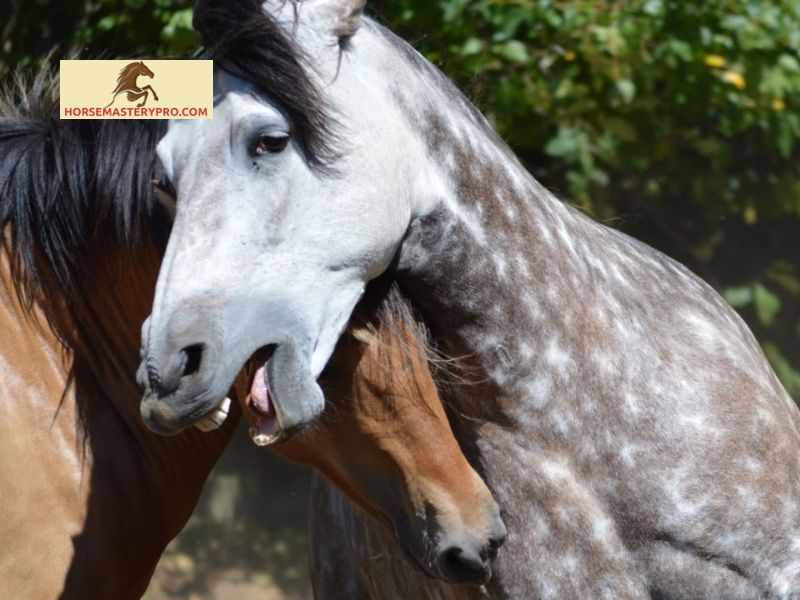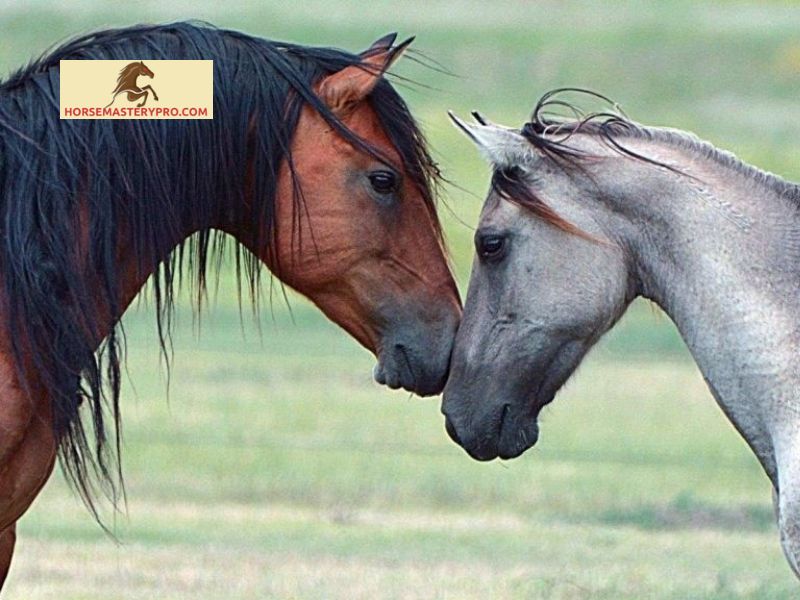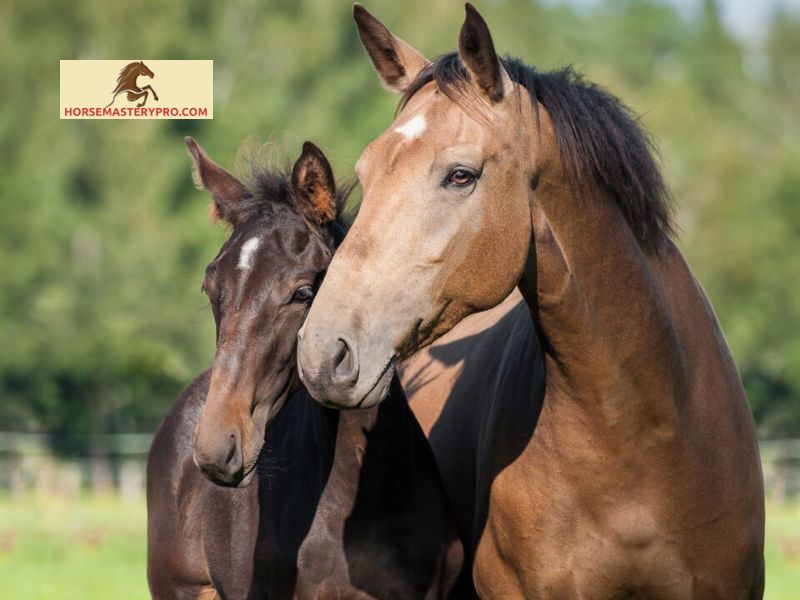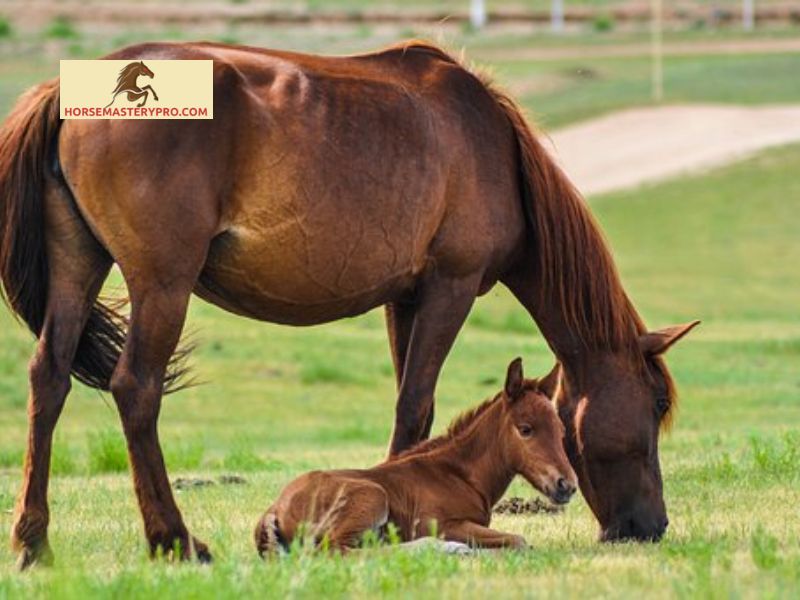Discover the art of natural mating of horses. Learn techniques for successful breeding, from proper introduction to understanding mating behavior.
Have you ever wondered about the wonders of nature when it comes to horse breeding? Today, I invite you to dive into the captivating world of natural mating of horses. In this article, we will explore the importance and benefits of this traditional method, as well as gain a deeper understanding of the natural reproductive behavior of these majestic creatures.
Importance and Benefits of Natural Mating in Horse Breeding

When it comes to breeding horses, natural mating holds a special place in the hearts of breeders worldwide. This method allows horses to engage in their instinctual behaviors, enhancing the chances of successful fertilization. By allowing horses to mate naturally, breeders can harness the full potential of their equine partners, ensuring the preservation of desirable traits.
But why choose natural mating over artificial insemination? Not only does it provide a more organic approach to breeding, but it also allows for a greater variety of genetic combinations. This diversity can lead to stronger, healthier offspring with a higher potential for success in various equestrian disciplines.
Understanding the Natural Reproductive Behavior of Horses
To truly appreciate the beauty of natural mating, we must grasp the intricate dance that horses perform during the breeding process. Horses possess an innate ability to communicate their readiness to mate through various behaviors and cues. Understanding these signals is key to ensuring a successful mating.
Mares, for instance, exhibit certain behaviors when they are in heat, or “in estrus.” They may become more vocal, urinate frequently, and demonstrate a receptive posture. Stallions, on the other hand, display heightened interest, often nickering or nuzzling the mare. Observing and interpreting these behaviors allows breeders to determine the optimal time for mating, increasing the chances of a fruitful outcome.
So, are you ready to delve deeper into the realm of natural mating? Join me as we explore the factors that affect natural mating, how to prepare horses for this process, and the techniques needed for a successful breeding. Together, we will celebrate the wonders of nature and embrace the beauty of horse reproduction.
Stay tuned for the upcoming sections where we will discuss the factors affecting natural mating, preparing horses for this process, and the techniques for successful breeding. Remember, horsemasterypro.com is your go-to resource for all things horse-related.
Factors Affecting Natural Mating of Horses

Age, Health, and Fertility of the Horses Involved
When it comes to natural mating of horses, several crucial factors come into play. The age, health, and fertility of both the stallion and the mare significantly influence the success of the breeding process.
Age plays a crucial role in horse reproduction. Mares typically reach their peak fertility between the ages of 4 and 15, while stallions are most fertile between 4 and 20 years old. It is important to consider the age of the horses involved to ensure optimal reproductive capabilities.
The health of the horses is another vital factor. Both the mare and stallion should undergo regular health check-ups to identify any underlying issues that may hinder successful mating. Proper nutrition, exercise, and veterinary care contribute to the overall well-being and fertility of the horses.
Fertility, of course, is of utmost importance. Ensuring that both the mare and stallion have sound reproductive systems is crucial for natural mating. Conducting fertility tests, such as evaluating hormone levels and semen quality, can help breeders determine the best candidates for successful breeding.
Choosing Compatible Horse Breeds for Successful Natural Mating
Compatibility between horse breeds is a key consideration when it comes to natural mating. While horses of different breeds can successfully mate, certain combinations may yield better results due to complementary traits and characteristics.
Breeders often consider factors such as conformation, temperament, and performance abilities when selecting compatible horse breeds. Breeding horses with similar traits can enhance the chances of producing offspring that excel in specific disciplines or possess desired physical attributes.
Moreover, understanding the genetic compatibility between horse breeds is crucial in avoiding potential health issues in the offspring. Breeders should be knowledgeable about the potential genetic risks associated with certain combinations and make informed decisions to ensure the well-being of the future foals.
In the next section, we will explore how to prepare horses for natural mating, including nutrition, conditioning, and determining the optimal time for mating. The journey of natural mating continues, and horsemasterypro.com is here to guide you every step of the way.
Preparing Horses for Natural Mating
Enhancing Fertility through Proper Nutrition and Conditioning
Before embarking on the journey of natural mating, it is essential to ensure that both the stallion and mare are in optimal health and condition. Proper nutrition plays a vital role in enhancing fertility and increasing the chances of successful mating.
For the stallion, a balanced diet rich in essential nutrients, such as proteins, vitamins, and minerals, is crucial. This helps maintain his reproductive health, ensuring the production of healthy and viable sperm. Additionally, regular exercise and conditioning help improve stamina, enabling the stallion to confidently engage in the mating process.
Similar attention should be given to the mare’s nutrition and conditioning. A well-balanced diet that meets her specific nutritional needs is vital for reproductive health. Adequate levels of vitamins, minerals, and omega-3 fatty acids support the mare’s reproductive system, promoting healthy ovulation and conception. Regular exercise, such as lunging or riding, helps maintain her overall fitness, contributing to successful mating.
Evaluating the Mare’s Estrus Cycle and Determining the Right Time for Mating
To achieve the best possible outcome in natural mating, breeders must have a thorough understanding of the mare’s estrus cycle. This cycle consists of several distinct phases, each with its own characteristics and hormonal changes. By closely monitoring these changes, breeders can determine the optimal time for mating.
Observing the mare’s behavior and physical signs is crucial during this process. Signs of estrus in mares may include increased vocalization, frequent urination, and a receptive posture. Additionally, veterinarians may perform regular ultrasound examinations to monitor the development of follicles and the condition of the uterus.
By combining behavioral observation and veterinary guidance, breeders can pinpoint the precise moment when the mare is most fertile. This knowledge allows for accurate timing of mating, increasing the likelihood of successful fertilization.
Stay tuned as we continue our exploration of natural mating techniques. In the following sections, we will delve into creating a safe and controlled environment for mating, as well as the tips and techniques for successful natural breeding. Remember, horsemasterypro.com is your trusted source for all things horse-related.
Ensuring a Safe and Controlled Environment for Natural Mating

Selecting an Appropriate Location for Mating
Selecting the right location for natural mating plays a crucial role in ensuring the safety and comfort of both the stallion and the mare. Ideally, the chosen area should be spacious enough to allow the horses to move freely, reducing the risk of injury. Moreover, the location should provide a sense of privacy, minimizing distractions that could disrupt the mating process.
When considering a location, it is essential to assess the ground conditions. The area should be level, free from any sharp objects or hazards that could potentially harm the horses. Additionally, the ground should provide adequate traction to prevent slips or falls during the mating process.
Providing Proper Fencing and Handling Facilities for Safety
To maintain a controlled environment during natural mating, it is imperative to have appropriate fencing and handling facilities in place. Sturdy fencing is necessary to prevent the horses from escaping or causing harm to themselves or others. Wooden or sturdy metal fencing that is at least 5 feet in height is recommended to ensure the horses remain within the designated area.
In addition to fencing, proper handling facilities should be available to safely manage the horses during the mating process. These facilities can include stocks or breeding stocks, which provide a secure and confined space for handling the horses. This not only ensures the safety of the handlers but also allows for better control and ease of handling during the mating process.
By selecting an appropriate location and providing adequate fencing and handling facilities, breeders can create a safe and controlled environment for natural mating. This not only minimizes the risk of accidents but also promotes a stress-free and comfortable atmosphere for the horses, increasing the chances of a successful breeding.
In the next section, we will delve into the techniques and tips for successful natural mating, exploring the proper introduction of the stallion and mare, as well as understanding the mating behavior and cues displayed by horses. Stay tuned to unlock the secrets of successful horse breeding!
Conclusion: Embracing the Beauty of Natural Mating
As we reach the end of our journey through the realm of natural mating, we can’t help but marvel at the wonders of nature and the artistry of horse reproduction. By understanding the importance and benefits of natural mating, as well as the innate behaviors and cues displayed by horses during the breeding process, we can pave the way for successful and thriving equine offspring.
At horsemasterypro.com, we believe in honoring the natural instincts of horses and preserving their genetic diversity through natural mating. Our mission is to provide you with the knowledge and resources necessary to enhance your understanding of horse breeding, ensuring the health and success of future generations.
Remember, when introducing the stallion and mare, take the time to create a calm and controlled environment, allowing them to establish a bond and trust each other. Observe their behaviors and cues closely, as these will guide you in determining the optimal time for mating. Additionally, be present during the mating process to ensure a safe and successful breeding.
Now that you are equipped with the techniques and tips for successful natural mating, it’s time to embark on your own journey as a horse breeder. Embrace the beauty of this natural process, and may your endeavors be filled with joy, healthy offspring, and the fulfillment of your equestrian dreams.
Thank you for joining us on this captivating exploration of natural mating in horses. For more insightful articles, expert advice, and a community of passionate horse enthusiasts, visit us at horsemasterypro.com. Together, let’s celebrate the magnificence of these incredible creatures and continue to preserve their legacy through natural breeding practices.


